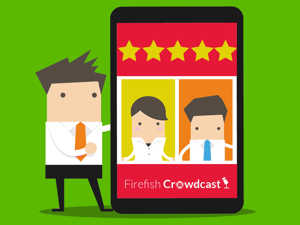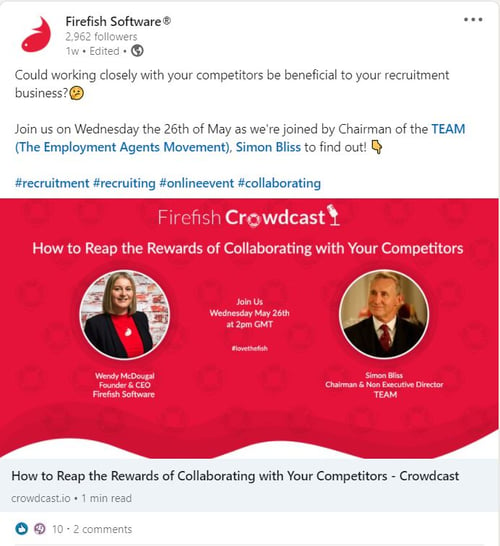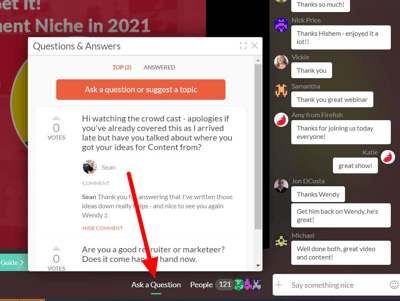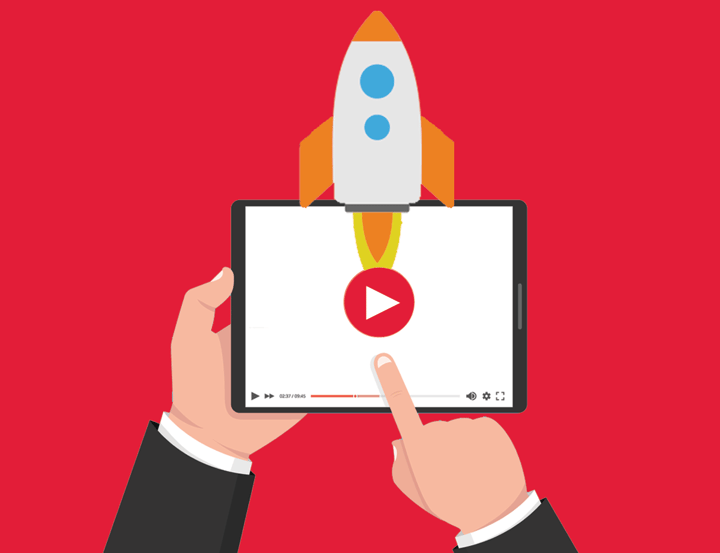Since the pandemic shut down face-to-face recruitment events, some recruitment agencies have been hosting online events on video platforms like Crowdcast instead.
There are a few different live video platforms out there, but Crowdcast is by far the easiest l’ve come across.
It’s really straight forward to set up, manage and promote your online events – all you need is a guide to get your recruitment events channel up and running. So here it is!
Follow these steps to start a branded recruitment Crowdcast channel of your own:
1. Decide your goal
What's your drive for starting a Crowdcast? As with any new venture, think about what your main goal is before you do anything.
Hosting your own Crowdcast show takes time and effort, so you need to decide how you’ll get a return from it, and how you’ll measure its success.
You also will want to choose a Crowdcast package that fits your needs. I'd recommend starting off with the cheapest Starter package until you're on your feet and have a better idea of ROI (return of investment).
Some potential goals that a video channel like Crowdcast can help you with:
- Building brand awareness
- Attracting new candidates and generating new business leads
- Nurturing existing contacts in your CRM with high-value video content
- Establishing your agency as experts in your niche.
Essentially, your Crowdcast is an opportunity to spread the message that you’re a reputable recruitment brand and differentiate yourself on the market.
Download: How to Differentiate Your Agency on the Recruitment Market
2. Brand up your channel
It’s important that your Crowdcast channel looks good and is easily recognisable so it stands out to your audience in busy social media feeds.
For example, what do you want your channel name to be? And what should your logo and header image look like?
You could make your channel logo the same as your company logo, but make sure there’s a slight difference so people can clearly identify one logo from the other.
We went for something quite different for the Firefish Crowdcast logo - here’s what the Firefish logo and our Crowdcast logo look like as an example:

If you don’t have a designer to create a new logo, have a look at outsourcing the design to Fiverr. You could pick up a new logo for around £15. Otherwise, use one of these free design tools to create your own!
3. Book your guest(s)
You can’t have a good Crowdcast without great guests! Think carefully about who would be interesting and valuable to your target market and list out some potential speakers and topics.
It’s a good idea to book guests quite far in advance as calendars get busy, and stick to hosting your show at the same time and day to keep bookings simple.
I'd also recommend having a pool of back-up guests that you can fall back on if someone has to cancel last minute - this does happen, unfortunately!
Try to keep your topics fresh and current and avoid overlapping too much with previous episodes. For example, if you have 3 shows in the same quarter all about the impact of Covid-19 on hiring in your market, your followers are going to get sick of the topic and might unfollow your channel.
I keep a note of all previous and potential future shows in a spreadsheet so I can keep a close eye on what we’re covering.
Read: 8 of the Best Recruitment Crowdcasts from 2020
4. Create your brief
 Once you’ve got your guest booked in, it’s time to create a brief for them. This brief will have all the information the guest will need to know before and during the show.
Once you’ve got your guest booked in, it’s time to create a brief for them. This brief will have all the information the guest will need to know before and during the show.
In your brief, include the show title, your potential questions or talking points (I recommend a max of 6 otherwise you’ll be there all day!) and details of the event.
Send the brief to your guest in plenty of time so they have the opportunity to come back with any questions.
It’s also important to include some instructions on how the guest should sign up to the event and go live on the day so they have everything in writing. You might even want to do a test run to make sure there are no tech issues, as that’s the last thing you need when you’re about to go live!
5. Promote your event
Once you’ve scheduled your show on the Crowdcast platform, you can start thinking about how to market your event.
To pull in your audience, you’ll need a promo image (we normally include headshots of the speaker(s) and the topic/episode title in this) and a few summarised points that will sell the event to your audience.
Here’s an example below:

This image should pull through to social media automatically if you’ve uploaded it to the event page on Crowdcast.
Some other ways you might want to promote your event are:
- Email marketing – send to relevant contacts in your CRM who have opted into marketing (make sure you segment your email lists so you’re not sending any candidate-focused shows to clients and vice versa)
- Adding to your company newsletter
- Sending round internally and encourage everyone to personally share with their networks.
- After your first Crowdcast, you can email all those who registered at the last Crowdcast with details of your new one directly from the Crowdcast platform. So in theory, each time you host a Crowdcast you should have a bigger list to market out to.
- Set up live streams - Crowdcast allows multi-streaming, meaning you can stream your show live to social media channels like Facebook and LinkedIn while on the crowdcast platform. Find out how to set this up here.
6. Go live
On the day of the event, the most important thing is to be super organised. Aside from your host and guest, it’s a good idea to have another person overseeing the show, monitoring the comments section and feeding any questions into the ‘Ask a question’ section so the host can see them.

The comments section is a great place to link to any relevant content that your attendees might find useful.
If you’ve set up a multi-stream of the event to social media, make sure you monitor these channels at the same time in case any comments or questions come through.
7. Follow up with attendees
Once your event has passed, you can download your attendee list as a CSV and upload the contacts into your recruitment CRM (provided the contacts have given their consent for you to hold their data through the Crowdcast platform).
You can then email those on the list with the recording in case anyone couldn’t make the event live and if you’re really organised and have the next show scheduled, you can use this as an opportunity to promote that one too!
8. Learn from your data
If you’ve put together a spreadsheet in step 4 with all your potential topics and titles, over time you can also use this to track how many people attended each show too.
Use this data you gather on live attendees and replays to see which topics and guests are most popular with your target audience and decide who to book for future shows.
As with any new marketing platforms you try, the key is to test, learn from the data and continually adapt your strategy to suit your goals.
Bringing new channels into your marketing strategy always takes a bit of planning. Download the eBook below for guidance – plus a free marketing plan template to help get your plan rolling!
Katie Paterson
Katie once headed up the Firefish blog and marketing team. She now works as a freelance copywriter and continues to contribute to our award-winning blog.




